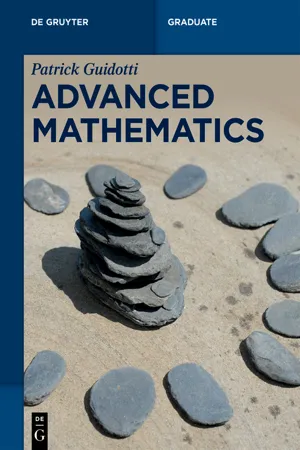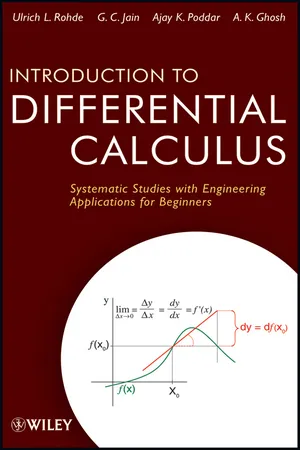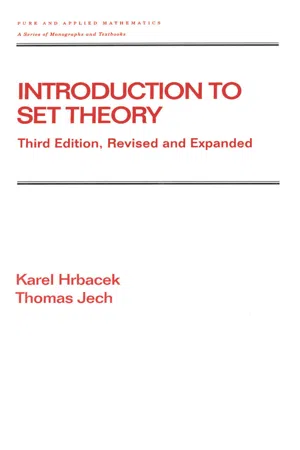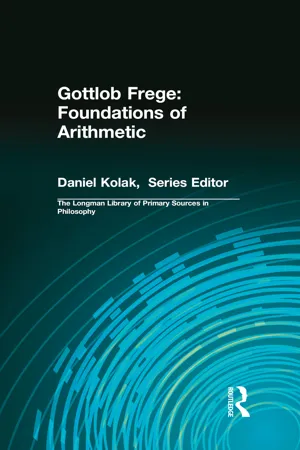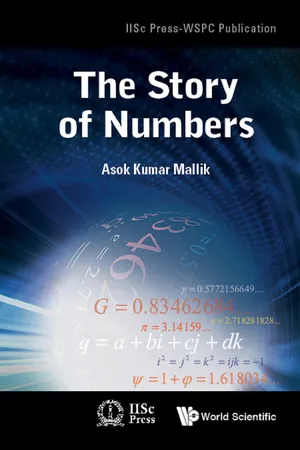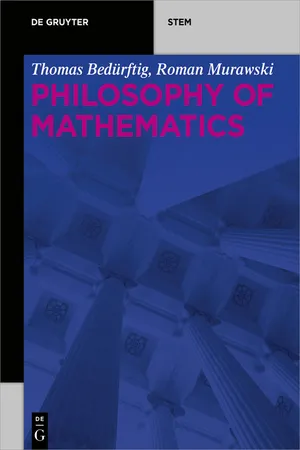Mathematics
Number
A number is a mathematical concept used to quantify, count, and measure. It can represent quantities, positions, or identifiers. In mathematics, numbers can be classified into various types, such as natural numbers, integers, rational numbers, and real numbers, each with its own properties and characteristics.
Written by Perlego with AI-assistance
Related key terms
Related key terms
1 of 4
Related key terms
1 of 3
8 Key excerpts on "Number"
- eBook - ePub
Advanced Mathematics
An Invitation in Preparation for Graduate School
- Patrick Guidotti(Author)
- 2022(Publication Date)
- De Gruyter(Publisher)
2 NumbersWhile we assume that natural Numbers are given, we will construct whole, rational, real, and complex Numbers from them in this chapter. Doing so will allow us to introduce concepts that are useful in many other subject areas within mathematics. Along with the natural NumbersN ,we assume that the two operations of addition and multiplicationare given and satisfy the properties we all learned in grade school as arithmetic (commutativity and associativity for both, the existence of an identity for multiplication and distributivity).+: N × N → N , ( m , n ) ↦ m + n ,·: N × N → N , ( m , n ) ↦ m · n ,2.1 Rational Numbers
It is likely a historical fiction but still conceivable that Numbers have been “invented” to satisfy our need to measure and quantify. Since there are no absolute quantities, the first and rougher estimates of quantity are more and less. If we care to be more precise, however, we could and do understand size in terms of arbitrarily chosen units. The first definition of one meter (m) was, for instance, the length of a specific bar, which was held in Paris. Measurement then relates the object to be measured back to the chosen reference unit. With the natural Numbers at our disposal, we can understand objects whose length is an integer multiple of the unit. But what about objects, which cannot be measured exactly as an integer Number of units such as your height in meters (most likely)? This question points to the need of finding a way to express sizes that go beyond simple integer multiples of a unit. Using the example of a meter, we can come across an object that fits exactly two times in a meter. In more abstract terms, this relationship could be captured as it takes two (of these) to make one unit, which again only requires the use of two natural Numbers to express and can be taken as the definition of the word one-half or of the Number1 2. How can we turn this simple idea into a proper mathematical definition of rational Numbers? Consider the problem of obtaining a construction of the Numberm nform , n ∈ N. It would correspond to the “real world” relationship it takes n (of these) to make m units. Again, describing what will eventually bem n, only requires access tom , n ∈ N. We could therefore simply stipulate thatm nis the pair( m , n ) - eBook - ePub
Introduction to Differential Calculus
Systematic Studies with Engineering Applications for Beginners
- Ulrich L. Rohde, G. C. Jain, Ajay K. Poddar, A. K. Ghosh(Authors)
- 2012(Publication Date)
- Wiley(Publisher)
Chapter 3 Discovery of Real Numbers: Through Traditional Algebra 3.1 IntroductionCalculus is based on the real Number system and its properties. But what are real Numbers and what are their properties? To answer this question, we start with the simplest Number system consisting of Natural Numbers or Counting Numbers . In fact, the first Numbers known to the man were counting Numbers.In arithmetic, the four fundamental operations, namely addition, subtraction, multiplication, and division are used to make new Numbers out of old Numbers—that is, to combine two Numbers to create a third . Accordingly, these operations are called binary operations .Ordinary algebra (or so-called traditional algebra) is a branch of mathematics, in which symbols are used to represent Numbers (or quantities), in all the arithmetical operations. In fact, ordinary algebra is a generalization of arithmetic .1The subject of algebra involves the study of equations and a Number of other problems that developed out of the theory of equations. It is in connection with the solution of algebraic equations that negative Numbers, fractions, rational Numbers, and irrational Numbers were discovered. The set of rational Numbers together with that of irrational Numbers make the set of real Numbers .It is interesting to study the history of development of the real Number system. For example, it took a long time for the zero to enter the family of Numbers. The reason for this delay was due to the fact that zero has a physical meaning of “nothing ”, and therefore, in order to consider it as a Number, we had to wait for negative Numbers to appear and be accepted.It was nearly 150 years ago that mathematicians adopted the correct viewpoint toward these various types of Numbers. They recognized that the concept of Numbers could be extended to include negative and irrational - eBook - ePub
- Karel Hrbacek, Thomas Jech(Authors)
- 2017(Publication Date)
- CRC Press(Publisher)
Chapter 3Natural Numbers1 Introduction to Natural Numbers
In order to develop mathematics within the framework of the axiomatic set theory, it is necessary to define natural Numbers. We all know natural Numbers intuitively: 0, 1, 2, 3, .. . ,17 , .. . , 324, etc., and we can easily give examples of sets having zero, one, two, or three elements:Ø has 0 elements.{Ø} or, in general, {a} for any a, has one element.{Ø, {Ø}}, or {{{Ø}},{{{Ø}}}}, or, in general, {α,ο} where a ≠ b , has two elements, etc.The purpose of the investigations in this section is to supplement this intuitive understanding by a rigorous definition.To define Number 0, we choose a representative of all sets having no elements. But this is easy, since there is only one such set. We define 0 = Ø. Let us proceed to sets having one element (singletons): {Ø}, {{Ø}}, {{θ, {θ}}}; in general, {x}. How should we choose a representative? Since we already defined one particular object, namely 0, a natural choice is {0}. So we define1 ={ 0 }= { θ }Next we consider sets with two elements: {θ, {θ}}, {{θ}, {θ, {θ}}}, {{θ}, {{θ}}}, etc. By now, we have defined 0 and 1, and 0 ≠ 1 . We single out a particular two-element set, the set whose elements are the previously defined Numbers 0 and 1:2 =It should begin to be obvious how the process continues:{ 0 , 1 }={ θ ,.{ θ }}3 ={ 0 , 1 , 2 } = { θ , { θ } , { θ , { θ } } }4 ={ 0 , 1 , 2 , 3 } = { θ , { θ } , { θ , { θ } } , { θ , { θ } , { θ } } } }5 ={ 0 , 1 , 2 , 3 , 4 } etc .The idea is simply to define a natural Number n as the set of all smaller natural Numbers: {0,1,..., n — 1}. In this way, n is a particular set of n elements.This idea still has a fundamental deficiency. We have defined 0, 1, 2, 3, 4, and 5 and could easily define 17 and—not so easily—324. But no list of such definitions tells us what a natural Number is in general. We need a statement of the form: A set n is a natural Number if ... . We cannot just say that a set n - eBook - ePub
Gottlob Frege: Foundations of Arithmetic
(Longman Library of Primary Sources in Philosophy)
- Gottlob Frege(Author)
- 2020(Publication Date)
- Routledge(Publisher)
124 And yet, or rather because of that, these objects are not subjective fantasies. There is nothing more objective than arithmetical laws.§ 106. Let us cast another brief retrospect over the course of our investigation! After we had established that Number is neither a heap of things nor a property of such, but that it is also not a subjective product of mental processes, but rather that a Number statement asserts something objective, we next attempted to define the individual Numbers 0, 1, and so on, along with progression in the Number series. The first attempt miscarried, because we had defined only the predication of [115/116] the concept, but had not specifically defined 0 or 1, which are only parts of these. This had the result that we could not prove the identity of Numbers. It revealed itself in the fact that the Number with which arithmetic is concerned must be conceived not as a non-self-sufficient attribute, but substantively.125 Number appears in this way as a recognizable object, even if not as a physical or even merely spatial object, nor yet as one of which we can devise an image by means of our imagination. We next posited the basic principle that the meaning of a word is not to be defined in isolation, but rather in the context of a proposition, by adherence to this alone can we, as I believe, avoid a physical conception of Number without lapsing into the psychological. Now there is one kind of propositions that for every object must have a sense, those are the recognition-propositions, known as equations in the case of Numbers. Number statements also, we saw, are to be regarded as equations. It came therefore to this, to stipulate the sense of a numerical identity, to express it without making use of Number words or the word ‘Number’. We discerned in the possibility of mutually univocally [one-one] correlating an object falling under the concept F with an object falling the concept G - eBook - ePub
- Asok Kumar Mallik(Author)
- 2017(Publication Date)
- World Scientific Publishing Company(Publisher)
Chapter 3
Real Numbers
In Figure 2.1 we have seen that integers indicated by discrete points on a line, called the Number line, have gaps between them. The concept of Numbers is extended to include all the points on the Number line. All such Numbers to be discussed in this chapter are called real Numbers and the Number line will be referred to as the real Number line. The real Numbers have two basic classifications, viz., rational and irrational. Just like reference [7] for prime Numbers, a real Number dictionary and online internet-based reference for special real Numbers is also available.f3.1.Rational Numbers
Arithmetical operations like addition and multiplication on positive integers result in positive integers. It has already been mentioned that the process of subtraction of a larger integer from a smaller one necessitated the creation of negative integers. The first non-integers which were included to extend the concept of Numbers are rational Numbers. A rational Number, r, is created by the process of division aswhere p and q are integers.If q > p, then we call the rational Number, f, a rational fractiongFor p > q, the rational Number r = I + f, where I is the integer part and f is the fractional part. Integers are also rational Numbers with q = 1 and f = 0. If we consider the segment of the real Number line between 0 and 1, then all the rational fractions, f, fail to cover all the points. Similarly, the segment between any two integers cannot be filled up using only rational Numbers [9]. To fill up the real Number line in a continuous manner, we need the irrational Numbers also.3.2.Irrational Numbers
Euclid’s Elements contains a simple proof that is an irrational Number. The Number (if we agree to call it a Number) cannot be expressed as a rational Number. This can be proved by contradiction. Assuming this Number to be rational, let it be expressed in its lowest form as , where p and q - eBook - ePub
Real Analysis
A Historical Approach
- Saul Stahl(Author)
- 2012(Publication Date)
- Wiley(Publisher)
Those Numbers that corresponded to points not covered by the rational Numbers, such as the point X in Figure 6.1, became known as the irrational Numbers. Their description at first gave rise to some difficulties, but these difficulties were eventually resolved by the decimal Number system. For our purposes here a decimal Number has the form ± N.d 1 d 2 d 3 …, where N is a nonnegative integer and d 1,d 2, d 3,… are any of the digits 0, 1, 2, …, 9. By the time calculus was invented the following facts were taken for granted by all mathematicians: For every point P on the Number line there is a decimal Number r such that P = Pr. For every decimal Number r there is a point P on the Number line such that P = Pr. These decimal Numbers eventually became known as the real Numbers in order to distinguish them from the so-called imaginary Numbers that emerged in the sixteenth century. While the identification of the real Numbers with the decimal expansions provides us with a practical method for calculating with real Numbers, it suffers from two defects. It seems improper to describe a natural phenomenon such as the straight line in terms of a human construct that is based on the coincidence that earthlings have 10 fingers. Moreover, the technical details of the decimal system and its occasional ambiguities result in considerable complications when it comes to firming up the theoretical foundations of calculus. For this reason it is customary in texts at this level to free the real Numbers from their decimal shackles and to resort to a qualitative description of their behavior. This will be accomplished here in two steps. In the next section we focus on the arithmetical operations and the notion of order. The subsequent section is devoted to the algebraic analog of the geometrical assumption that the real Numbers fill up the Number line - eBook - ePub
- Thomas Bedürftig, Roman Murawski(Authors)
- 2018(Publication Date)
- De Gruyter(Publisher)
Chapter 1 . At the beginning we make some fundamental remarks.Problems connected with the concept of real Numbers are the source of many questions considered nowadays in the philosophy of mathematics. These are questions that do not directly affect the everyday mathematical practice and research. The matter is the background, the development, the awareness of mathematics, of its methods and concepts, hence things concerning first of all the reflection, the understanding, the teaching and learning of mathematics.The basic challenges with respect to real Numbers can be seen in the development that began in the 19th century and primary led to the fact that real Numbers have been established as a purely arithmetical Number domain and have replaced the geometrical continuum. This establishing of reals was the precondition of the arithmetization of mathematics that dominates its picture today. Old fundamental questions and new problems connected with the arithmetization did not disappear. However, from the fact that real Numbers are put as the foundation follows a definite decision with respect to many foundational problems that could have been decided in another way. The real Numbers are – as we want to clarify – the answer. Other answers, for example that coming from the nonstandard mathematics, are hardly taken into account.In Chapter 2 we have followed and seen in the previous sections how then a change of a thousand year old mathematics of magnitudes into Number mathematics took place. This happened not in a step by step process but it was partially a dramatic, in principle revolutionary event. So far in magnitudes was hidden the continuity that in the course of justifying the analysis required an explicit formulation. The precondition of this was – to say it in a pointed manner – the “demolition” of the continuum and the “abolition” of the continuous that caused the conception of the continuum as a set and the introduction of actual infinite sets. In the case of such transitions it is often spoken – here a bit harmlessly – about “the change of the paradigm”. The transition from mathematics of magnitudes to Number and set-theoretic mathematics was a revolution comparable (and taking place at the same time) with the change from the biology of creation to the evolutionary biology. It was not only a revolution with respect to the method but a revolution in thinking - eBook - ePub
Movement and Time in the Cyberworld
Questioning the Digital Cast of Being
- Michael Eldred(Author)
- 2019(Publication Date)
- De Gruyter(Publisher)
the data and solutions to sets of equations of such and such a type. The data given by real beings are all quantitative by virtue of casting the being of beings, of things, solely as extension, so that all the many qualitative dimensions of a being, no matter what it and they may be, are reduced to magnitudes that can be inserted into equations as knowns. What is unknown is then discovered by solving the equations for x. The behaviour of real beings must therefore be described in equations, and certain knowledge is to be gained by solving equations of certain kinds. Mathematics itself can then become the motor driving the quest for knowledge through the investigation of kinds of equations with the aim of being able to solve them algebraically for the unknown, x. Whether the magnitude in question is geometrically continuous or arithmetically discrete is no longer crucial, because magnitudes in general can be represented by symbols, and these symbols may be defined simply as the solution to a certain kind of equation (along with its characteristic Numbers, whether they be ‘linearly’ rational, quadratic, cubic, algebraic, transcendental, complex, etc.) within a certain kind of mathematical entity such as a field, ring, manifold, group, etc. defined solely by a set of logically consistent axioms whose validity relies on immediate intuition.The steps beyond the natural Numbers to the rational Numbers and on to the real Numbers need not stop there. The complex-imaginary Numbers, for instance, can be introduced simply as the solution to certain kinds of equation that do not have solutions among the real Numbers, but require the square root of minus one, the imaginary Number i to get a solution. Even these complex-imaginary Numbers can still be represented to the imagination as Argand planes, which themselves are imagined as extended, and they are still applicable to representing real-world phenomena, such as wave phases, mathematically. The quest for knowledge (starting with, but soon proceeding beyond, classical mechanics in the natural science of physics) is then guided by applying the mathematical mind to finding solutions to ever more complex systems of equations in abstract, algebraic symbols standing for magnitudes in general. The future historical trajectory of mathematics for the next few centuries as an abstract symbolic discipline is thus fore-cast by the Cartesian ontological rules, laying down the blue-print for the modern age.
Index pages curate the most relevant extracts from our library of academic textbooks. They’ve been created using an in-house natural language model (NLM), each adding context and meaning to key research topics.
Explore more topic indexes
Explore more topic indexes
1 of 6
Explore more topic indexes
1 of 4
